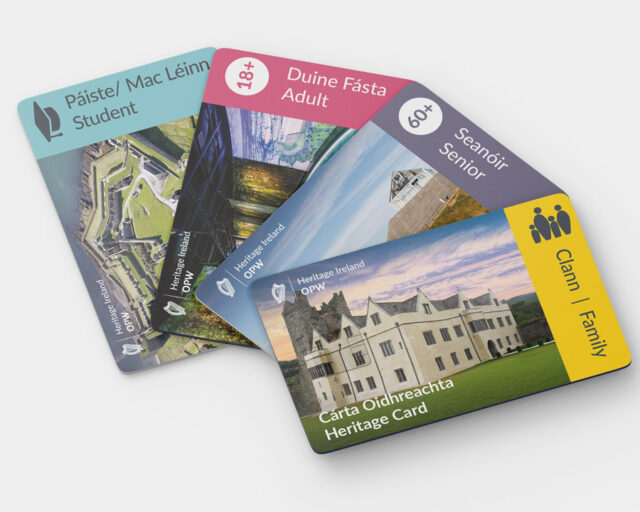Buaicphointí Caisleán Eas Géitine (7)
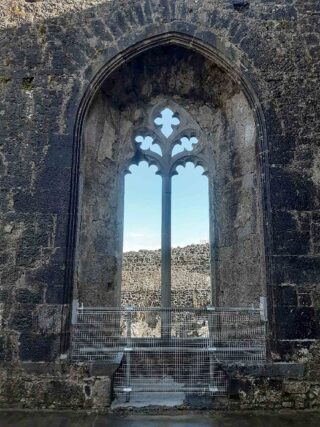
An Halla Mór
Enter the Great Hall of the earls of Desmond, a magnificent fifteenth-century building where medieval men of power held political assemblies, meted out justice and brokered international treaties. The windows, in their delicate tracery style, become more elaborate as you reach the dais at the top of the hall, where the earl, countess and dignitaries held court. On the wall behind where they sat there is a triple-arched blind arcading, which further emphasised their importance. The windows bear the skilled repair work of the Office of Public Works’s own stonemasons.

The Battlements
Askeaton Castle is a natural island fortress in the River Deel. Walking along the bawn wall, you can imagine how its defenders might have repelled attacking forces. The stone defences are built into the limestone platform and the wall is particularly impressive, with defensive embrasures near ground level and a battlemented wall-walk. The arrow loops have circular expansions, hollowed out to accommodate firearms when they became a feature of combat. The crenellated battlements also feature loop openings, which would have allowed a soldier to hold a steady position behind the merlon.
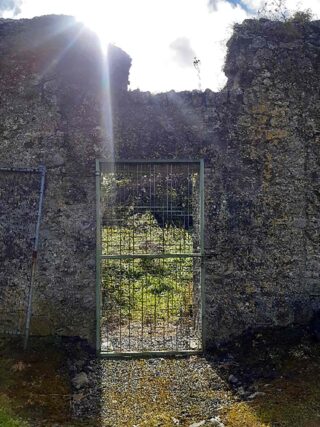
A Glimpse of Paradise
On the opposite side of the bawn, beyond the wall, lies a medieval garden. The Normans encountered walled gardens in Moorish palaces on the Crusades, and built similar gardens when they returned home. They called them ‘paradises’ – the word is Persian in origin and means a walled garden. The garden at Askeaton was laid out in typical medieval style, with square beds.
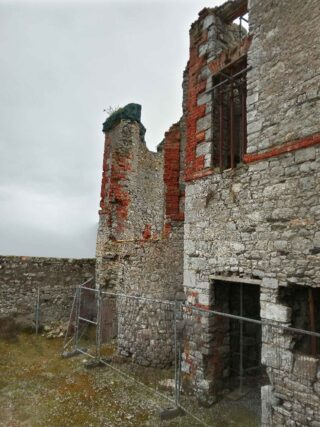
The Hellfire Club
Visit the remains of one of the only Hellfire Clubs to be established in Ireland. The Hellfire Clubs were dens of disrepute and raucous behaviour. They were also associated with sinister occult practices; the devil himself is even said to have made an appearance at one. Drawing its membership from the wealthy and well-connected of the county, the Limerick Hellfire Club was notorious for hard drinking and wanton debauchery.
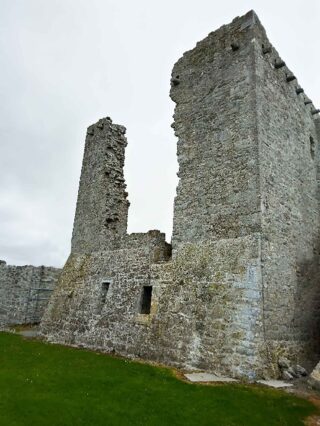
The Inner Ward
Climb the path to the Inner Ward and see the remains of Desmond Tower, the Constable’s Tower and what is left of a third tower and gatehouse. Built on a further elevation of limestone, this was the citadel. Entrance was only permitted to the few – the most important and the most trusted. From here the best views of the castle complex and the town beyond can be enjoyed. The Constable’s Tower, dating from the thirteenth century and evoking a world of knights and Crusades, holds the higher ground.
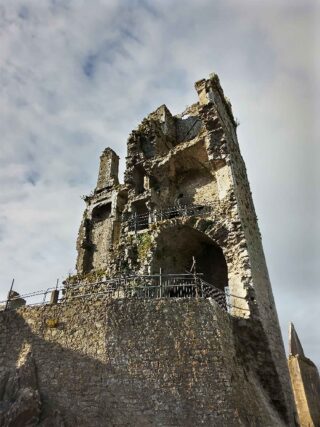
Desmond Tower
See the remains of Desmond Tower, its construction laid bare on the east side. Once the beautiful residence of the earls of Desmond, with fine fifteenth- and sixteenth-century stonework still to be seen, it was destroyed by Cromwell’s army in 1652. A dramatic hole still remains in the west wall, where it was breached by cannon. The fireplace that clings to the chimneystack bears the coats of arms of the earls of Desmond and the Butlers of Dunboyne, the family of Eleanor, countess of Desmond, wife of Gerald, the Rebel Earl. This tower is where, in 1579, Eleanor offered hospitality to Bishop Patrick O’Hely and Father Conn O’Rourke before betraying them to the authorities at Limerick, who tortured and executed them. The unfortunate clerics became known as the Kilmallock Martyrs.
Askeaton Friary
After your visit to Askeaton Castle, follow the River Deel further downstream to the old Franciscan Friary. Walk through the cloisters like monks of centuries past. Don’t miss the carving of St Francis in the north-west corner – it is reputed to have healing properties. The stonemasonry, particularly the tracery windows, is magnificent.
